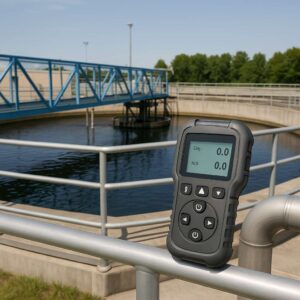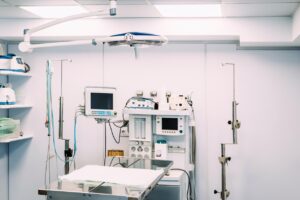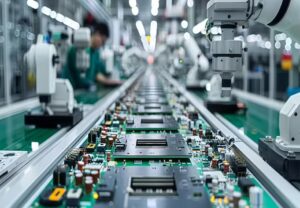Struggling with inaccurate breath test results? Traditional sensors can’t always tell the full story—methane sensors offer the precision needed to unlock reliable gastrointestinal diagnostics.
Methane sensors have become essential tools in breath testing technologies, significantly improving the accuracy of both methane and hydrogen analysis for diagnosing conditions like SIBO and IBS.
While the answer may seem straightforward, the science behind it is fascinating—read on to discover how methane sensors are reshaping modern medical diagnostics and home health solutions.
How Do Methane Sensors Improve the Accuracy of Breath Testing?
Inaccurate test results undermine both diagnosis and treatment. Traditional breath tests often rely solely on hydrogen detection, ignoring methane—a gas produced by different gut microbiota. This omission can lead to false negatives or incomplete diagnostic profiles, especially in patients whose symptoms are driven by methane-producing organisms.
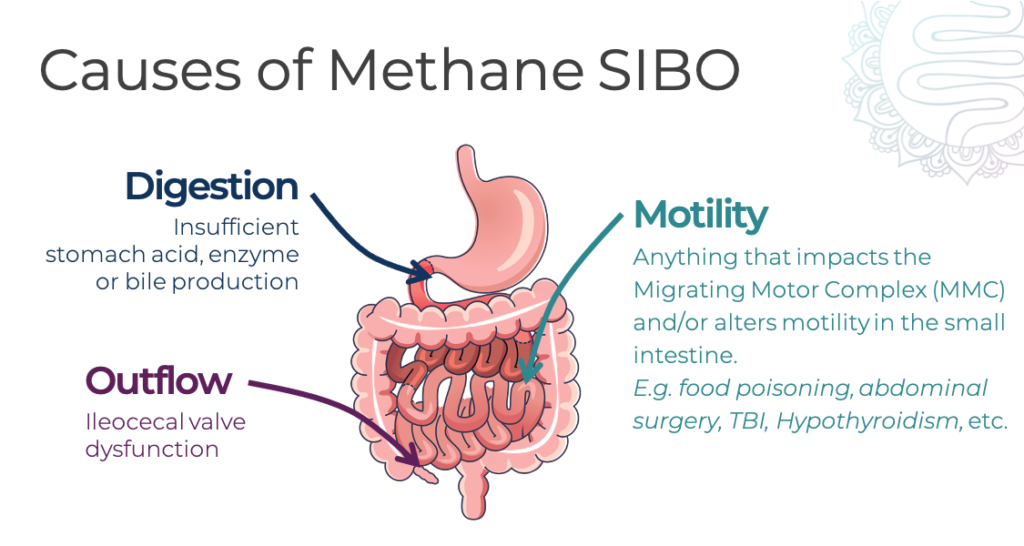
Methane sensors bring precision, selectivity, and completeness to breath analysis. By detecting methane concentrations as low as a few parts per million (ppm), these sensors reveal microbial activity in the gut that hydrogen-only tests miss. This is particularly critical in cases of constipation-predominant irritable bowel syndrome (IBS-C) or methane-dominant small intestinal bacterial overgrowth (SIBO), where hydrogen levels may remain normal, but methane spikes significantly.
Modern methane sensors typically use technologies like nondispersive infrared (NDIR), semiconductor metal oxide (MOX), or catalytic bead detection, which offer rapid response, low cross-sensitivity, and long-term stability. These sensors enable clinicians to capture both peak gas values and subtle temporal changes during the test’s 2-3 hour measurement window.
The result? More accurate, dual-gas diagnostics that reduce false negatives by up to 30%. Clinicians gain confidence in differentiating between hydrogen-dominant and methane-dominant cases, leading to more tailored and effective treatment regimens. For patients, this means faster diagnosis, fewer invasive procedures, and better long-term outcomes.
Why Is High Sensitivity Crucial in Dual-Gas (Methane and Hydrogen) Breath Testing?
Low-resolution sensors risk missing critical diagnostic signals. In breath testing, particularly for gastrointestinal disorders like SIBO and IBS, even small fluctuations in gas concentration can indicate major changes in gut microbiota activity. Many conventional sensors lack the sensitivity required to detect methane and hydrogen at the low ppm (parts per million) levels typically found in exhaled breath.

pic source:PRINCETON UNIVERSITY andlinger center
High-sensitivity sensors ensure that both gases are accurately detected, improving diagnosis, treatment selection, and monitoring outcomes. Whether measuring early gas production peaks or prolonged fermentation trends, dual-gas breath analyzers require precise sensors capable of distinguishing methane and hydrogen without interference, noise, or signal overlap.
Here’s why high sensitivity is essential in dual-gas breath testing systems:
1. Breath Gas Concentrations Are Extremely Low
- Hydrogen and methane in breath usually range from 1 to 50 ppm, often peaking around 20–30 ppm in abnormal cases.
- Low-sensitivity sensors might fail to register early or mild elevations in gas levels, leading to false negatives, especially in subclinical or early-stage SIBO.
- A high-sensitivity sensor can detect gas concentrations as low as 1 ppm or less, providing more complete and accurate readings across the full test duration.
2. Accurate Timing of Gas Elevation is Diagnostic
- SIBO diagnosis depends not just on gas quantity, but when gas levels rise—typically within 90 minutes after substrate ingestion.
- Inaccurate or delayed readings from low-performance sensors may miss this diagnostic window, affecting interpretation.
- High-sensitivity sensors with rapid response times (e.g., ≤1 second) allow real-time tracking of gas dynamics, offering greater confidence in diagnosis.
3. Dual-Gas Interpretation Requires Independent, Selective Detection
- Many sensors suffer from cross-sensitivity, where the presence of one gas interferes with the detection of another. For example, some hydrogen sensors may misinterpret methane signals and vice versa.
- High-quality methane sensors are designed with selective sensing elements (e.g., specific catalytic coatings or infrared filters) that can distinguish CH₄ from H₂, CO₂, or humidity—essential for accurate multi-gas diagnostics.
- Dual-channel systems or hybrid sensors allow for simultaneous analysis without interference, ensuring that each gas profile is correctly attributed.
4. Better Sensitivity Enables Personalized Treatment Monitoring
- Once diagnosed, patients undergoing dietary or antibiotic therapy often take repeated breath tests to assess treatment effectiveness.
- A sensor with high sensitivity allows clinicians to track even small improvements or relapses, which is essential for chronic or relapsing cases of SIBO and functional bowel disorders.
- This data can feed into longitudinal analysis and even AI-driven interpretation models for personalized healthcare.
5. Regulatory Standards Demand Precision
- Clinical breath analyzers must meet strict performance and repeatability standards, especially in Europe (e.g., MDR) and the U.S. (FDA).
- High-sensitivity methane and hydrogen sensors improve compliance by ensuring consistent, reproducible results within regulatory tolerances.
- This also facilitates integration into clinical-grade devices and supports use in research trials or standardized care protocols.
What Role Do Methane Sensors Play in Diagnosing SIBO?
SIBO is often underdiagnosed due to incomplete gas detection. Most breath tests used to diagnose Small Intestinal Bacterial Overgrowth (SIBO) rely primarily on hydrogen measurements. However, a large subset of patients produces methane instead of hydrogen, leading to misdiagnosis, delayed treatment, and ongoing gastrointestinal symptoms.
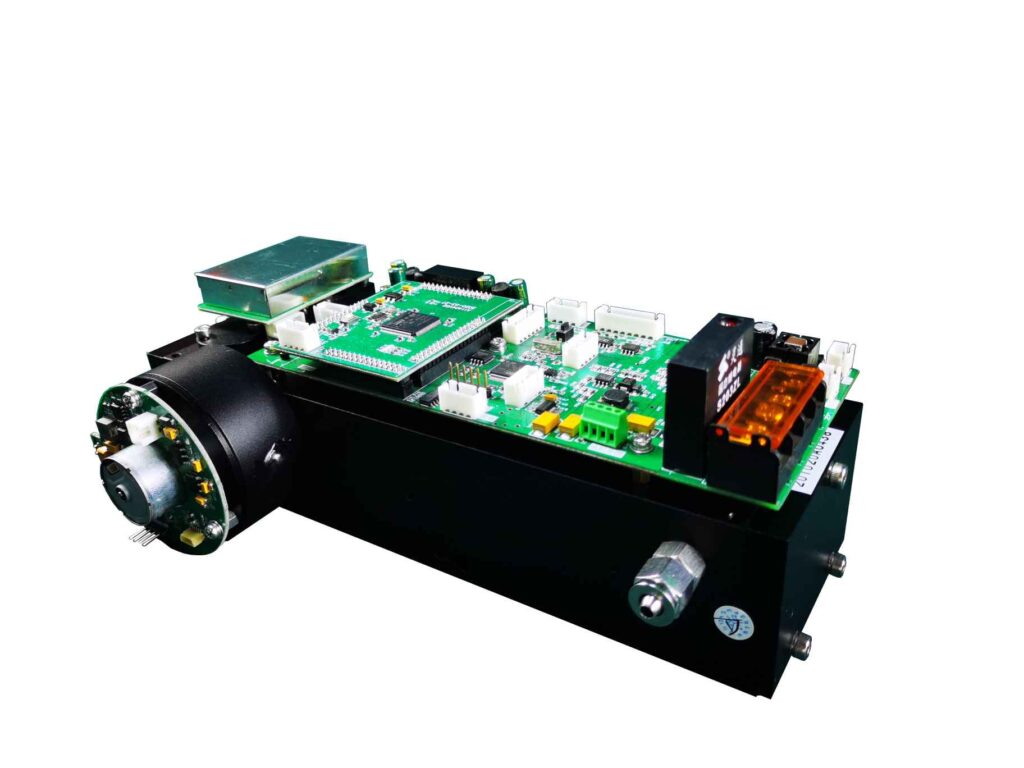
Methane sensors are essential for uncovering methane-dominant SIBO subtypes and improving diagnostic accuracy. These sensors detect exhaled methane with high specificity, helping clinicians identify cases that would be missed by hydrogen-only systems. The integration of methane detection allows for a more nuanced and accurate understanding of gut microbiota activity, especially in constipation-predominant patients.
NDIR Gas Sensor
ESE-IR-100M infrared gas sensor is mainly composed of infrared correlation filter technology (GFC) and self-designed long optical path gas absorption cell (L-Cell), wavelength filter, infrared detector and high-precision signal processing circuit to complete the gas Quantitative analysis in the infrared band. The sensor has the characteristics of high precision, good stability and fast response time.
Freatures:
☑ Infrared correlation filter technology (GFC) and long optical path gas cell (L-Cell), with the ability to detect ultra-low gas concentrations.
☑ Low-temperature cooling infrared detector, low drift, high precision, low power consumption, fast response.
☑ High-performance infrared light source, long service life, special structure design to effectively avoid the impact of vibration.
☑ Internally self-tuning PID algorithm controls the temperature with high precision.
☑ The light source, detector, core circuit, etc., adopt a modular design, with high reliability, good scalability, and easy maintenance.
☑ Standalone gas detection module for easy integration into any detection system or control system.
☑ The dense-flow double detector with high sensitivity and reliability adopts the protection block of infrared radiation mode to detect the absorption signal of the gas under test. Compensation is less affected by external environmental factors than the single-channel measurement scheme, and the result is more stable without frequent calibration.
☑ Output signal: RS-232/RS-485/4-20mA optional
The measuring range can be customized according to customer needs, and the gas pool heating function is optional.
To better understand their value, here’s how methane sensors contribute to accurate SIBO diagnosis:
1. Identifying Methane-Producing Organisms
- Methane in breath is primarily produced by Methanobrevibacter smithii, an archaea species that thrives in the small intestine. Unlike bacteria that produce hydrogen, these methanogens consume hydrogen and convert it into methane.
- In hydrogen-only breath tests, these organisms mask their presence by reducing detectable hydrogen levels—making it appear as if there is no overgrowth. Methane sensors expose this hidden microbial activity, enabling detection of methane-dominant SIBO.
2. Differentiating Between SIBO Subtypes
- SIBO is not a single entity—it includes hydrogen-dominant, methane-dominant, and mixed-type SIBO. Each type correlates with different symptoms: hydrogen tends to cause diarrhea, while methane is strongly associated with constipation and bloating.
- By quantifying both gases separately, methane sensors allow physicians to pinpoint the subtype and select a targeted treatment regimen. For example, methane-predominant SIBO may require combination antibiotic therapy (e.g., rifaximin + neomycin), unlike hydrogen-dominant cases that often respond to rifaximin alone.
3. Enabling Early and Non-Invasive Diagnosis
- Early detection of methane elevation in breath helps clinicians intervene before structural gut damage occurs or symptoms become chronic.
- Because breath testing is non-invasive, integrating methane detection with existing hydrogen sensors enables a single, simple test to give a complete diagnostic picture. This reduces the need for invasive procedures like jejunal aspirates, which are costly and uncomfortable for patients.
4. Supporting Standardized Diagnostic Protocols
- According to recent guidelines (such as those from the North American Consensus), a breath methane level ≥10 ppm at any point during the test is a positive indicator for intestinal methanogen overgrowth.
- Methane sensors with high-resolution output make it possible to apply these thresholds consistently and reliably across different testing platforms, raising the clinical confidence and reproducibility of breath tests.
How Do Methane Sensors Support the Development of Portable Home Breath Test Devices?
Patients demand comfort and convenience—hospital-based testing is no longer the only option. But bringing clinical-grade diagnostics into patients’ homes requires compact, low-power, and accurate sensing technologies.
Methane sensors designed with miniaturized architecture and digital interfaces now enable portable, user-friendly breath analyzers for home use. These sensors are capable of delivering lab-comparable results with simplified calibration and maintenance procedures. Their ability to operate at ambient conditions with minimal drift over time ensures long-term reliability. Companies developing home gastrointestinal health monitors, including devices for diet tracking and SIBO screening, are increasingly turning to these sensors to meet consumer demands. This shift is contributing to a broader trend in decentralized diagnostics and personalized medicine.
How Are Methane Sensors Integrating with AI and Data Analytics Systems?
Raw data alone doesn’t equal insight. In the era of digital health, the true value of a sensor lies not only in its detection capabilities but in how its data is interpreted.
Modern methane sensors with digital output and cloud-connectivity features are easily integrated with AI-powered platforms, enabling continuous learning models that track patient trends, detect anomalies, and personalize dietary or treatment recommendations. These sensors also support real-time monitoring and feedback loops in telemedicine applications. By combining high-fidelity data acquisition with advanced analytics, healthcare providers can identify early disease markers, optimize therapy, and even forecast gastrointestinal flare-ups. This makes methane sensors central to the evolution of predictive and preventative medicine.
In conclusion, methane sensors are not just improving breath test precision—they are redefining the landscape of gastrointestinal diagnostics, home health monitoring, and smart medical technology integration.
If you have any questions, please contact us!





